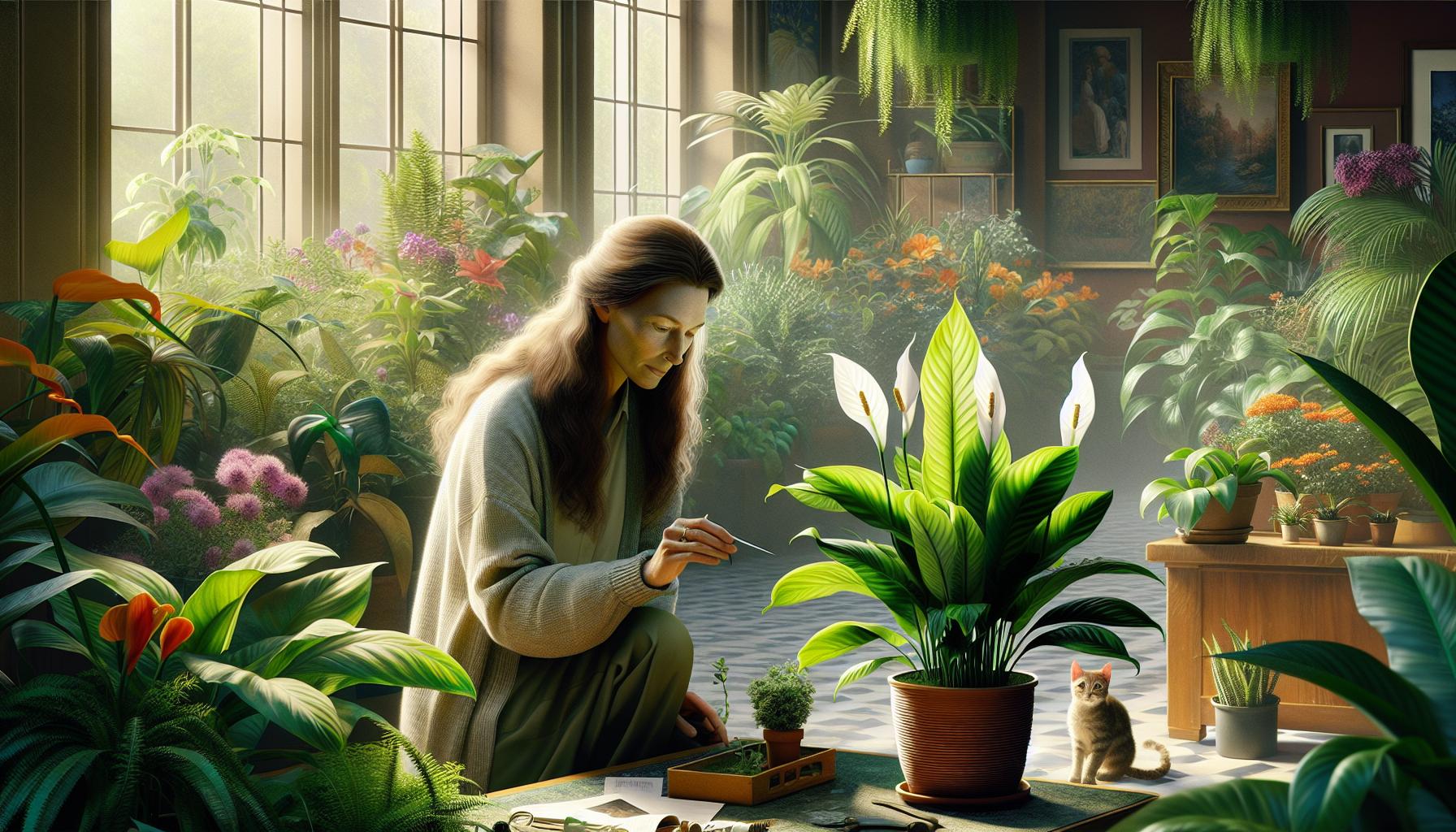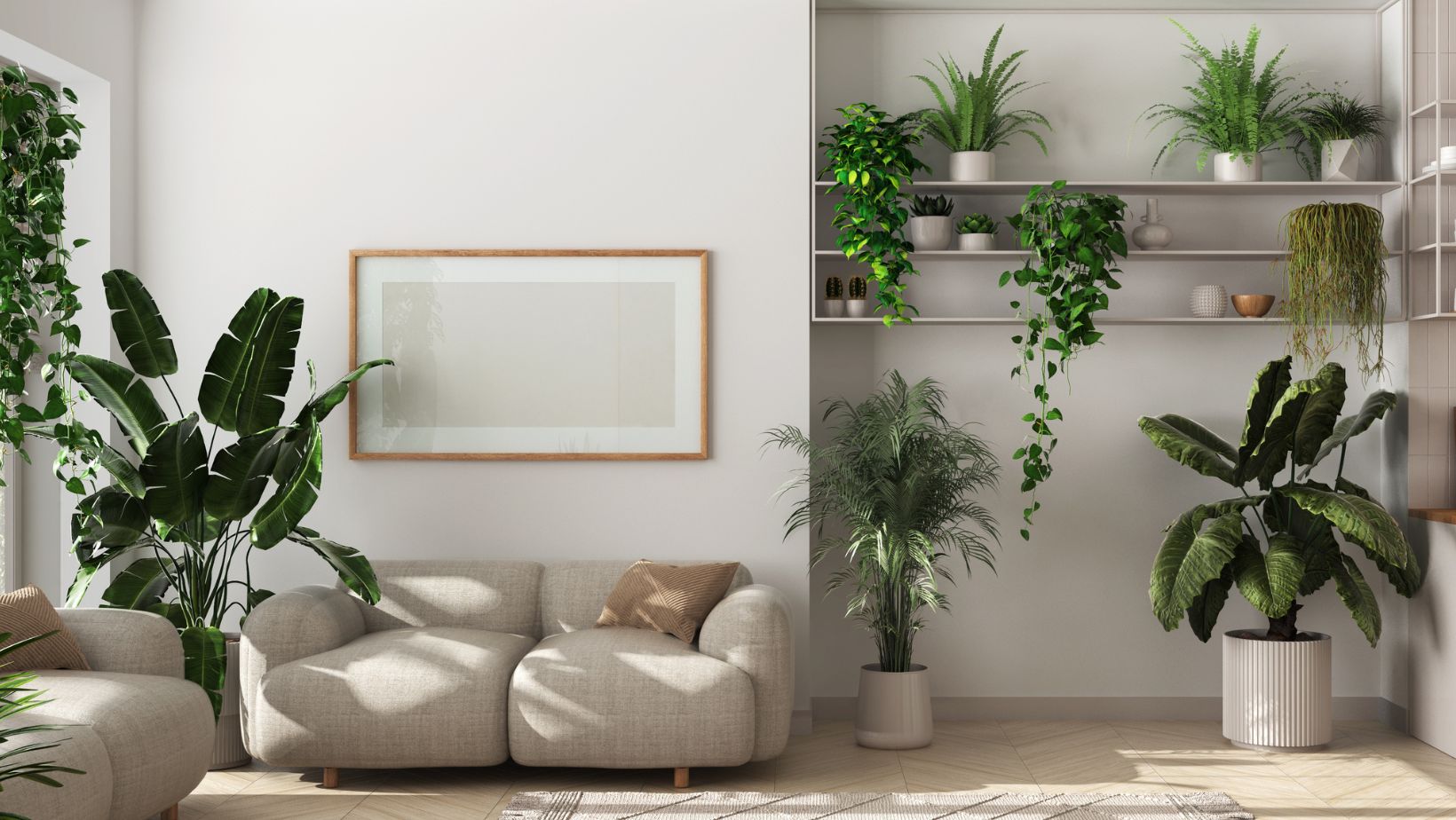
As a plant enthusiast I’ve learned that not all houseplants are as innocent as they appear. While indoor plants can transform our living spaces into lush sanctuaries some popular varieties harbor hidden dangers that could harm our pets and children.
I’ll never forget the day my friend rushed her cat to the vet after it nibbled on a peace lily leaf. That incident sparked my mission to research and educate others about toxic houseplants. From the common pothos to the elegant oleander these seemingly harmless plants contain compounds that can cause symptoms ranging from mild irritation to severe illness if ingested.
I’m sharing this essential guide to help you identify and manage toxic houseplants safely. Whether you’re a seasoned plant parent or just starting your indoor garden knowing which plants pose risks will help create a safer environment for everyone in your home.
Key Takeaways
- Common houseplants like Philodendron, Peace Lily, Pothos, Dieffenbachia, and Snake Plant contain toxic compounds that can be harmful to humans and pets if ingested or touched.
- Symptoms of plant poisoning include mouth/throat burning, excessive drooling, swelling, difficulty breathing, stomach pain, skin rash, and in severe cases, heart rhythm changes or seizures.
- Cats are especially vulnerable to toxic plants, with lilies being potentially lethal within 72 hours. Dogs experience different toxic reactions, with symptoms like gagging, diarrhea, and confusion.
- Safe alternatives exist for toxic plants – Boston Ferns, Spider Plants, African Violets, and Parlor Palms offer similar aesthetic appeal without the risks.
- Always place toxic plants out of reach (at least 4 feet high), label them clearly, and maintain proper documentation in case of accidental exposure.
Toxic House Plants
I’ve identified 15 frequently found houseplants that pose significant toxicity risks in homes across America. These plants contain various toxic compounds that affect humans pets differently when ingested or touched.
Popular Plants That Are Surprisingly Toxic
These common houseplants contain toxic properties:
- Philodendron
- Contains calcium oxalate crystals
- Toxic to humans pets
- Causes immediate burning sensation when chewed
- Peace Lily (Spathiphyllum)
- Contains insoluble calcium oxalates
- Affects mouth tongue digestive tract
- Severe irritation occurs within minutes of exposure
- Pothos (Devil’s Ivy)
- Releases raphides when damaged
- Creates microscopic cuts in tissue
- Dangerous to cats dogs children
- Dieffenbachia (Dumb Cane)
- Causes temporary voice loss
- Creates severe mouth swelling
- Potentially fatal to small pets
- Snake Plant (Sansevieria)
- Contains saponins
- Produces gastrointestinal distress
- Moderate toxicity level
Symptoms of Plant Poisoning
Common poisoning symptoms include:
Physical Reactions:
- Mouth throat burning
- Excessive drooling
- Swelling of lips tongue
- Difficulty breathing
- Stomach pain vomiting
Skin Contact Signs:
- Rash development
- Itching burning sensation
- Skin redness
- Blisters formation
- Contact dermatitis
- Heart rhythm changes
- Seizures
- Vision problems
- Loss of coordination
- Extreme lethargy
| Plant Name | Toxic Compounds | Severity Level | Time to Symptoms |
|---|---|---|---|
| Philodendron | Calcium Oxalate | Moderate | 1-2 minutes |
| Peace Lily | Calcium Oxalate | Moderate | 2-5 minutes |
| Pothos | Raphides | High | Immediate |
| Dieffenbachia | Oxalic Acid | Severe | Immediate |
| Snake Plant | Saponins | Mild | 30-60 minutes |
How Toxic House Plants Affect Pets
Toxic house plants pose distinct risks to pets through ingestion skin contact or exposure to plant sap. Based on veterinary reports 5% to 10% of pet poisoning cases involve exposure to toxic indoor plants.
Dangerous Plants for Cats
Cats face severe reactions to specific house plants due to their unique physiology metabolic processes. Here’s a breakdown of the most hazardous plants for felines:
| Plant Name | Toxic Component | Effects on Cats |
|---|---|---|
| Lilies | Lycorine | Kidney failure lethal within 72 hours |
| Pothos | Calcium oxalate | Oral irritation difficulty swallowing |
| Philodendron | Calcium oxalate crystals | Severe mouth burning vomiting |
| Monstera | Insoluble oxalates | Oral pain excessive drooling |
| Snake Plant | Saponins | Nausea diarrhea depression |
Common signs of plant poisoning in cats include:
- Drooling excessively with visible mouth discomfort
- Pawing at the face mouth area repeatedly
- Vomiting within 2 hours of exposure
- Refusing food water for 12+ hours
- Showing signs of lethargy confusion
Harmful Plants for Dogs
Dogs experience different toxic reactions compared to cats with varying severity levels. Here’s a comprehensive list of plants particularly dangerous to canines:
| Plant Name | Toxic Component | Effects on Dogs |
|---|---|---|
| Sago Palm | Cycasin | Liver failure death within 24 hours |
| Dieffenbachia | Oxalate crystals | Throat swelling breathing issues |
| ZZ Plant | Calcium oxalate | Stomach upset oral irritation |
| Peace Lily | Calcium oxalate | Digestive issues drooling |
| Rubber Plant | Ficin | Dermatitis gastrointestinal upset |
- Intense gagging retching behavior
- Sudden onset diarrhea within 4 hours
- Unexplained drooling lasting 30+ minutes
- Rubbing face against surfaces repeatedly
- Walking unsteadily showing confusion
Safe Handling and Care Tips

Managing toxic houseplants requires specific safety protocols to prevent accidental exposure. I’ve developed these guidelines through extensive research and consultation with botanical experts to ensure both plants and inhabitants stay safe.
Proper Plant Placement
- Place toxic plants on high shelves or hanging baskets, at least 4 feet above floor level
- Keep plants away from children’s rooms bedrooms nurseries
- Install plant stands with secure bases to prevent tipping
- Position plants away from high-traffic areas
- Use physical barriers like decorative fencing or terrarium enclosures
- Label each toxic plant with its common name scientific name
- Maintain a 3-foot distance between toxic plants and pet areas
- Remove fallen leaves stems flowers immediately
- Contact Poison Control:
- Call (800) 222-1222 for human exposure
- Contact ASPCA Animal Poison Control at (888) 426-4435 for pets
- Document the ingested plant species amount time
- First Response Steps:
- Remove remaining plant material from mouth
- Rinse mouth with cool water
- Preserve plant sample for identification
- Document symptoms onset time
- Medical Information to Provide:
- Plant species name
- Amount consumed
- Time of ingestion
- Observed symptoms
- Patient’s age weight medical history
- Documentation Requirements:
- Take photos of the plant
- Save any vomited material
- Record timeline of events
- Keep sample of the plant in sealed bag
Child-Safe Alternatives to Toxic Plants
I’ve curated a selection of non-toxic houseplants that offer the same visual appeal as their toxic counterparts:
Safe Alternatives for Common Areas
- Boston Fern replaces Pothos
- Spider Plant substitutes for Peace Lily
- African Violet stands in for Oleander
- Parlor Palm takes the place of Philodendron
- Christmas Cactus swaps for Dieffenbachia
Pet-Friendly Options
| Toxic Plant | Safe Alternative | Key Benefits |
|---|---|---|
| Snake Plant | Calathea | Air-purifying, colorful leaves |
| Monstera | Staghorn Fern | Unique foliage, wall-mounting |
| ZZ Plant | Swedish Ivy | Low maintenance, trailing stems |
| Aloe Vera | Haworthia | Succulent appearance, compact |
| Jade Plant | Echeveria | Rosette form, drought-tolerant |
Growing Conditions for Safe Plants
Light Requirements:
- Direct sun: Echeveria Succulents
- Partial shade: Spider Plants Boston Ferns
- Low light: Swedish Ivy Parlor Palms
Care Level:
- Beginner: Spider Plant African Violet
- Intermediate: Christmas Cactus Calathea
- Expert: Staghorn Fern Boston Fern
- Hanging baskets: Spider Plant Swedish Ivy
- Tabletop displays: African Violet Christmas Cactus
- Floor planters: Parlor Palm Boston Fern
- Wall mounting: Staghorn Fern Calathea
These alternatives create engaging displays while maintaining a safe environment for children pets.
Identifying Poisonous Indoor Plants
Visual Warning Signs
Toxic houseplants display distinctive characteristics that serve as warning indicators. These features include:
- Milky sap oozing from broken stems or leaves
- Glossy or waxy leaf surfaces with spotted patterns
- Unusual leaf formations with sharp edges or points
- Berries in bright colors like red orange or white
- Strong bitter smells when leaves are crushed
Common Plant Parts That Contain Toxins
Different parts of toxic plants concentrate harmful compounds in specific areas:
| Plant Part | Toxic Components | Example Plants |
|---|---|---|
| Leaves | Calcium oxalate | Philodendron Pothos |
| Seeds/Nuts | Cycasin | Sago Palm |
| Stems | Solanine | Dumb Cane |
| Flowers | Lycorine | Amaryllis |
| Bulbs | Cardiac glycosides | Oleander |
Using Plant Identification Apps
Modern technology offers reliable tools for identifying toxic plants:
- PlantSnap – captures 98% accurate plant identifications
- PictureThis – includes toxicity warnings in plant profiles
- iNaturalist – connects with botanist communities for verification
- PlantNet – maintains updated toxic plant databases
- Leafsnap – specializes in leaf pattern recognition
Professional Resources for Plant Verification
Expert sources provide authoritative plant identification services:
- Local botanical gardens offer plant identification clinics
- University extension offices analyze plant samples
- ASPCA maintains a toxic plant database with 375+ entries
- National Poison Control Centers provide 24/7 plant identification
- Master Gardener programs offer consultation services
Each toxic plant carries unique identifiers that set it apart from safe varieties. I reference these characteristics when examining any new houseplant additions to ensure proper identification matches authoritative sources.
Stay Vigilant And Keep Emergency Contact Numbers Handy
Creating a beautiful indoor garden shouldn’t come at the cost of safety. I’ve shared these insights to help you make informed decisions about the plants you bring into your home. Whether you’re a pet parent or have small children it’s crucial to know which plants pose risks.
I encourage you to take a fresh look at your current houseplant collection. Consider replacing toxic varieties with the safe alternatives I’ve suggested. Remember that a thriving indoor garden is one that brings joy and peace of mind not worry.
Stay vigilant and keep emergency contact numbers handy. Your local poison control center and veterinarian should be on speed dial. With proper knowledge and precautions you’ll be well-equipped to maintain a stunning yet safe indoor plant paradise.
